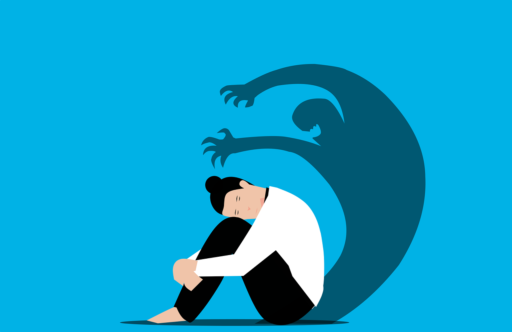You’re not alone in the midst of a panic attack, where the world feels suffocating and overwhelming. It’s an anguishing experience to endure, but understanding its duration can bring a semblance of solace. Panic attacks typically last anywhere from a few minutes to around half an hour, though it can feel like an eternity when you’re trapped within its grip. In this article, we’ll delve into the duration of panic attacks, providing insights and empathy for those grappling with these distressing episodes.
Factors influencing the duration of panic attacks
Panic attacks can vary in duration due to several factors. Understanding these factors can provide insight into why some panic attacks may be shorter or longer than others. The duration of panic attacks can be influenced by medical conditions, severity of symptoms, and the treatment and management techniques employed.
Medical conditions
Underlying medical conditions can impact the duration of panic attacks. Certain conditions, such as thyroid disorders or cardiovascular problems, may cause symptoms that mimic panic attacks. When these conditions are present, panic attacks may last longer as they are intertwined with the medical condition itself. Additionally, individuals with certain chronic illnesses may experience greater difficulty in managing panic attacks, potentially leading to longer durations.
Severity of symptoms
The severity of symptoms experienced during a panic attack can impact its duration. When symptoms are intense and overwhelming, panic attacks may last longer as the body and mind struggle to regain a sense of calm. Conversely, individuals who experience milder symptoms may find their panic attacks shorter in duration.
Treatment and management techniques
The effectiveness of treatment and management techniques can also influence the duration of panic attacks. Individuals who have learned effective coping strategies and implement them during a panic attack are likely to experience shorter durations. On the other hand, if one is not equipped with appropriate tools to navigate through a panic attack, it may prolong the duration of the episode.
Typical duration of panic attacks
Panic attacks generally fall within a specific timeframe. While each person’s experience may vary, it is helpful to understand the typical durations of panic attacks.
Minutes
Some panic attacks may be relatively short, lasting only a few minutes. These episodes are typically characterized by a sudden surge of intense fear and anxiety, accompanied by distressing physical sensations. Despite their brevity, even a few minutes of a panic attack can feel distressing and overwhelming.
Several minutes to less than an hour
Many panic attacks fall within the range of several minutes to less than an hour. During this time, individuals may experience a combination of physical and psychological symptoms, such as rapid heart rate, shortness of breath, chest tightness, and a sense of impending doom. These panic attacks can disrupt daily activities and cause significant distress.
Over an hour
While less common, panic attacks can occasionally last for over an hour. These prolonged episodes can be particularly challenging to endure, as the intense fear and anxiety persist for an extended period. If panic attacks frequently extend beyond an hour, it may be indicative of certain underlying conditions or require further evaluation by a healthcare professional.

Short-term panic attacks
Not all panic attacks are long-lasting. Some episodes can be considered short-term, which may provide a sense of relief for individuals experiencing panic attacks.
Panicky moments
Panicky moments refer to brief periods of intense fear and anxiety, often lasting only seconds or a few minutes. These episodes may arise unexpectedly, triggered by certain situations, thoughts, or memories. While brief, panicky moments can still be distressing and disruptive but may not escalate into full-blown panic attacks.
Brief episodes
Brief episodes of panic attacks typically last for a few minutes. During these episodes, individuals may experience a surge of fear and anxiety, often accompanied by physical symptoms. These panic attacks may subside relatively quickly, and individuals may regain a sense of calmness shortly afterward.
Long-term panic attacks
In contrast to short-term panic attacks, some experience more persistent and recurrent episodes that fall within the realm of long-term panic attacks. These episodes may be indicative of specific disorders or underlying conditions.
Chronic panic disorder
Chronic panic disorder refers to the presence of recurrent and frequent panic attacks, often accompanied by anticipatory anxiety and persistent worry about further episodes. Panic attacks associated with chronic panic disorder can last an extended period, sometimes surpassing the typical duration outlined earlier. Without appropriate management and treatment, chronic panic disorder can significantly impact a person’s daily life and well-being.
Panic disorder with agoraphobia
For individuals with panic disorder with agoraphobia, panic attacks can be especially distressing and have a prolonged duration. Agoraphobia is characterized by an intense fear of being in situations where escape might be difficult or embarrassing. In these cases, panic attacks may persist longer as the fear of being trapped or experiencing embarrassment further intensifies the symptoms.
Other anxiety disorders
While panic disorder is a primary condition associated with prolonged panic attacks, other anxiety disorders can also contribute to extended episodes. Conditions such as generalized anxiety disorder, social anxiety disorder, and post-traumatic stress disorder can manifest as panic attacks and may have varying durations depending on individual factors.

The subjective experience of time during panic attacks
During panic attacks, individuals may experience distortions in their perception of time. These distortions can contribute to a heightened sense of fear and discomfort during the episode.
Time distortion
One common subjective experience during panic attacks is the distortion of time. Many individuals report that time seems to slow down or even stand still during these episodes. What may feel like an eternity of fear and anxiety to the person experiencing the panic attack may, in reality, only last for a much shorter duration.
Dissociation and depersonalization
Alongside time distortion, some individuals may experience dissociative symptoms, where they feel detached from their body or their surroundings. Depersonalization, a particular form of dissociation, can contribute to a sense of unreality and disconnection from oneself. During these episodes, time may feel distorted or entirely lost, further adding to the distress experienced during panic attacks.
Factors affecting the perception of panic attack duration
Several factors influence how individuals perceive the duration of their panic attacks. Understanding these factors can shed light on the subjective experience of panic attacks.
Intensity of fear and anxiety
The intensity of fear and anxiety experienced during panic attacks can affect how the duration is perceived. When fear and anxiety are overwhelming, panic attacks can subjectively feel longer, as the individual may struggle to cope with the intense emotions.
Sense of control
The level of control an individual feels during a panic attack can impact their perception of its duration. When individuals feel helpless and unable to regain control over their symptoms, panic attacks may subjectively feel longer. However, when individuals have effective coping mechanisms and a sense of control over the situation, the duration may feel shorter.
Physical sensations
Panic attacks often come with a range of distressing physical sensations. The intensity and discomfort associated with these physical symptoms can contribute to a perceived lengthening of the panic attack. The more pronounced the physical sensations, the more likely individuals are to perceive the duration as longer.
Individual differences
Individual variations in psychological and physiological responses can also affect the perception of panic attack duration. Each person’s experience with panic attacks is unique, and certain factors specific to an individual, such as past traumas or cognitive processing styles, may influence how they perceive time during panic attacks.

Recognizing the end of a panic attack
Awareness of the signs indicating the end of a panic attack is crucial for individuals navigating through these episodes. Though panic attacks can be distressing, recognizing their conclusion can help provide relief and restore a sense of calm.
Gradual fading of symptoms
As a panic attack reaches its conclusion, symptoms often begin to gradually fade. The intensity of fear and anxiety subsides, and individuals may notice a decrease in physical sensations, such as heart rate returning to normal or breathlessness diminishing.
Regaining control over bodily sensations
A key indicator that a panic attack is ending is when individuals regain a sense of control over their bodily sensations. They may feel more grounded and connected to their body, experiencing a sense of relief as the debilitating symptoms gradually dissipate.
Residual anxiety
While the acute phase of a panic attack may come to an end, individuals may still experience residual anxiety afterward. This lingering anxiety can last for some time, even after the most intense symptoms have subsided. It is essential for individuals to acknowledge and address this residual anxiety to prevent it from triggering further panic attacks.
Treatment options for panic attacks
Various treatment options are available to individuals seeking relief from panic attacks. These treatments aim to reduce the frequency and intensity of panic attacks and improve overall well-being.
Medication
Medication can be prescribed to manage panic attacks, especially for individuals with severe or persistent symptoms. Antidepressants, such as selective serotonin reuptake inhibitors (SSRIs), are commonly prescribed to reduce the frequency and severity of panic attacks. Benzodiazepines may also be prescribed as a short-term solution to manage acute panic symptoms. However, it is vital to work closely with a healthcare professional to determine the appropriate medication and dosage.
Therapy
Psychotherapy, particularly cognitive-behavioral therapy (CBT), is highly effective in treating panic attacks and associated disorders. CBT helps individuals identify and challenge negative thought patterns and develop coping strategies to manage panic attacks. Therapists may also employ exposure therapy to gradually expose individuals to feared situations or triggers, helping to desensitize them over time.
Breathing exercises and relaxation techniques
Breathing exercises and relaxation techniques can be beneficial tools to manage panic attacks. Deep breathing exercises, such as diaphragmatic breathing, can help regulate breathing and reduce physiological symptoms of panic attacks. Practices like mindfulness meditation, progressive muscle relaxation, and guided imagery can also promote relaxation and provide a sense of calm during panic attacks.
Strategies to shorten panic attacks
While it may not be possible to completely eliminate panic attacks, certain strategies can help shorten their duration and provide individuals with a sense of control during episodes.
Deep breathing exercises
Engaging in deep breathing exercises can help regulate the body’s stress response during a panic attack. By taking slow, deep breaths from the diaphragm, individuals can activate the body’s relaxation response and mitigate the intensity of panic symptoms. Practicing deep breathing regularly can also help individuals feel more prepared and confident in managing panic attacks.
Grounding techniques
Grounding techniques involve redirecting attention away from distressing thoughts and physical sensations, thereby grounding oneself in the present moment. Common grounding techniques include focusing on the external environment by naming objects or observing their characteristics. Other techniques involve engaging the senses, such as smelling a pleasant scent or feeling the texture of an object to anchor oneself in the present and ease anxiety.
Positive self-talk
Positive self-talk can be an effective strategy to combat negative thoughts and reduce the duration of panic attacks. Engaging in affirmations and reassuring oneself that the panic attack is temporary and will pass can help shift focus away from fear and anxiety. Reminding oneself of past successful coping strategies or affirming personal strengths can further enhance a sense of control during panic attacks.
Conclusion
Understanding the duration of panic attacks is crucial for individuals experiencing these distressing episodes. Factors such as medical conditions, symptom severity, and treatment strategies can influence the duration of panic attacks. While panic attacks can vary in duration, typical episodes last from several minutes to less than an hour. Short-term panic attacks, such as panicky moments or brief episodes, provide temporary relief, while long-term panic attacks may be indicative of chronic panic disorder, panic disorder with agoraphobia, or other anxiety disorders.
The subjective experience of time during panic attacks can be distorted, with time feeling slower or lost altogether. Factors affecting the perception of panic attack duration include the intensity of fear and anxiety, the sense of control, physical sensations, and individual differences. Recognizing the end of a panic attack is essential, with signs such as the gradual fading of symptoms, regaining control over bodily sensations, and residual anxiety serving as indicators.
Various treatment options are available for individuals seeking relief from panic attacks, including medication, therapy, and breathing exercises. Strategies to shorten panic attacks involve engaging in deep breathing exercises, grounding techniques, and positive self-talk. By understanding the duration of panic attacks and exploring management strategies, individuals can find ways to cope effectively and regain control over their lives.